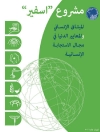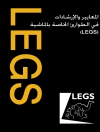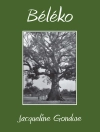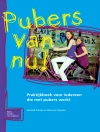This book highlights how horror in film and television creates platforms to address distinct areas of modern-day concern. In examining the prevalence of dark tropes in contemporary horror films such as Get Out, Annabelle: Creation, A Quiet Place, Hereditary and The Nun, as well as series such as Stranger Things, American Horror Story and Game of Thrones, amongst numerous others, the authors contend that we are witnessing the emergence of a ‘horror renaissance’. They posit that horror films or programmes, once widely considered to be a low form of popular culture entertainment, can contain deeper meanings or subtext and are increasingly covering serious subject matter. This book thus explores how horror is utilised as a tool to explore social and political anxieties of the cultural moment and is thus presented as a site for contestation, exploration and expansion to discuss present-day fears. It demonstrates how contemporary horror reflects the horror of modern-day life, be it political, biological, social or environmental. A vital contribution to studies of the horror genre in contemporary culture, and the effect it has on social anxieties in a threatening and seemingly apocalyptic time for the world, this is a vital text for students and researchers in popular culture, film, television and media studies.
Mục lục
Introduction.- Panic Watching: On the Function of Consuming Fictional Pandemics during a Real Pandemic.- When corporate biology gets caught up with Mother nature: An analysis of the Netflix viral horror The Rain.- Representations of environmental apocalyptic horror in Greenland.- From Haaa! To OOO: The New Cycle of Killer Objects: The New Cycle of Killer Objects.- Hereditary’ s intergenerational curse.- Haunted Churches, Wicked Schools, Addressing Postcolonial History through Philippine Horror.- A Ghost Story and Micro-Cosmic Horror: Virginia Woolf’s Indifferent Fear.- Shifting Subjectivities: Adopting the perspective of the Other in Mother and Get Out.- Pedophobiac Audiences: Mapping the presence of the child in horror cinema.- Good for Her; Ready or Not’s Final Girl and the Rich, Patriarchal Family as Monster.- The
It Duology: An Integrated Analysis of mainstream horror in the 2010s.- Why isn’t There Anybody? Isolation and Loneliness in Kurosawa Kiyoshi’s Pulse.- Paranormal Activity: The Marked Ones: A Failed Movie or a Movie Failed?.- The horror film and Donald trump: The revenge of minorities.
Giới thiệu về tác giả
Dr. Sarah Baker is Senior Lecturer in the School of Communication at Auckland University of Technology in New Zealand. She is Co-founder of the AUT Popular Culture Centre and Member of JMAD and the AUT Media Observatory Group. She is Senior Fellow and Member of the AUT Academy. Her extensive research interests include television and film in mediated popular culture focusing on the gothic, horror, sexuality and gender.
Amanda Rutherford is Lecturer in the School of Communication Studies and the School of Language and Culture at Auckland University of Technology in New Zealand. She is Member of the Gothic Association of New Zealand and Australia, the Popular Culture Association of Australia and New Zealand, the International Gothic Association, and the Pacific Modern and Ancient Language Association. She publishes predominantly in the area of mediated popular culture, gothic and horror, and fairy-tale.
Richard Pamatatau is Tenured Journalism Academic at AUT University and Programme Leader in the Journalism Department at the School of Communication Studies. He is Member of the School of Communication Studies’ social media, popular cultures and political reporting research groups and Member of the sponsorship and media committee. He has a Master of Creative Writing with First-Class Honours from Auckland University and is completing a Ph.D. in Poetry at Massey University. He is also Member of the Auckland Museum Pacific Advisory Board and its subcommittee and Member of the NZ Institute of Directors.












